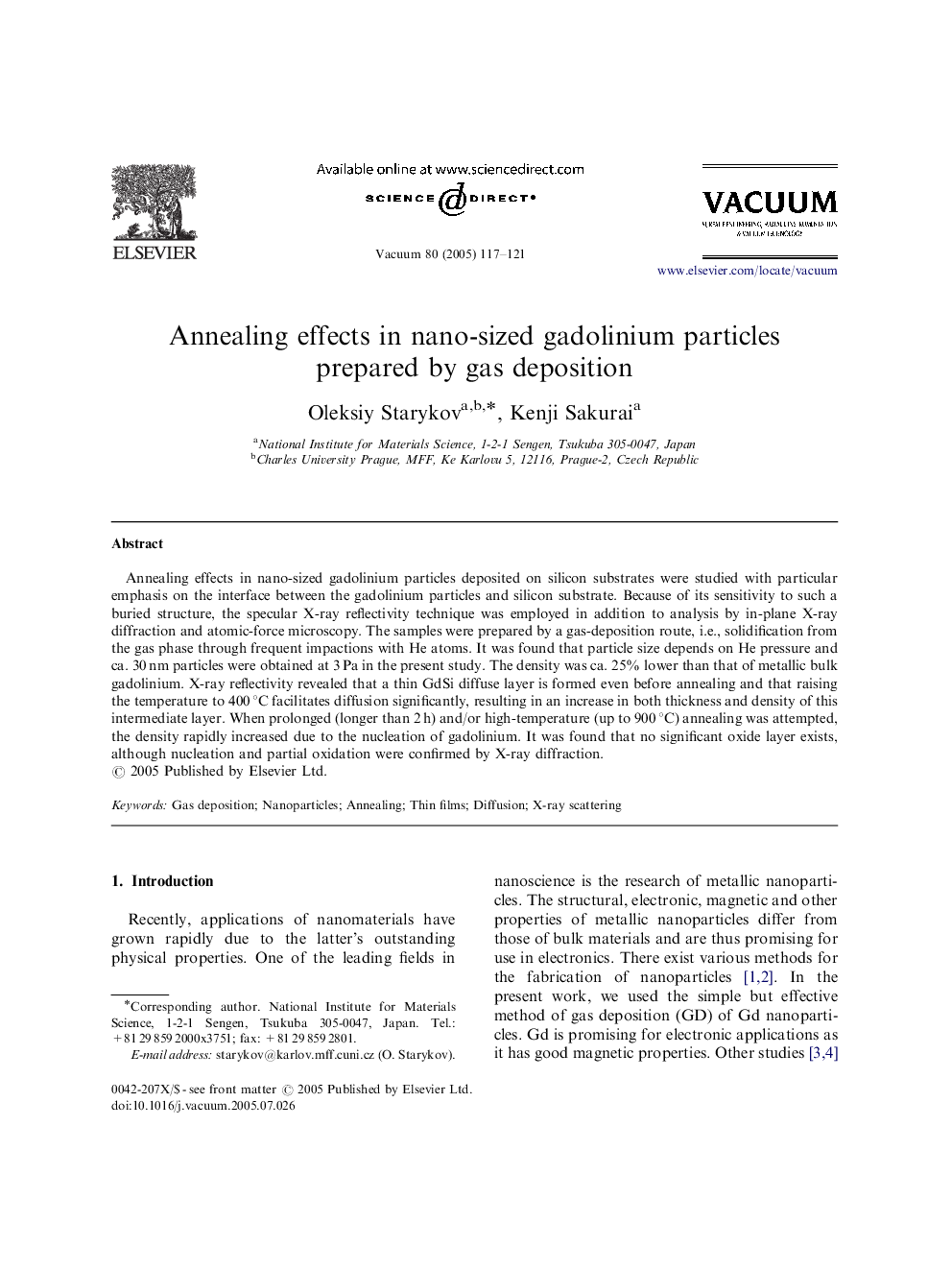| Article ID | Journal | Published Year | Pages | File Type |
|---|---|---|---|---|
| 9821489 | Vacuum | 2005 | 5 Pages |
Abstract
Annealing effects in nano-sized gadolinium particles deposited on silicon substrates were studied with particular emphasis on the interface between the gadolinium particles and silicon substrate. Because of its sensitivity to such a buried structure, the specular X-ray reflectivity technique was employed in addition to analysis by in-plane X-ray diffraction and atomic-force microscopy. The samples were prepared by a gas-deposition route, i.e., solidification from the gas phase through frequent impactions with He atoms. It was found that particle size depends on He pressure and ca. 30 nm particles were obtained at 3 Pa in the present study. The density was ca. 25% lower than that of metallic bulk gadolinium. X-ray reflectivity revealed that a thin GdSi diffuse layer is formed even before annealing and that raising the temperature to 400 °C facilitates diffusion significantly, resulting in an increase in both thickness and density of this intermediate layer. When prolonged (longer than 2 h) and/or high-temperature (up to 900 °C) annealing was attempted, the density rapidly increased due to the nucleation of gadolinium. It was found that no significant oxide layer exists, although nucleation and partial oxidation were confirmed by X-ray diffraction.
Related Topics
Physical Sciences and Engineering
Materials Science
Surfaces, Coatings and Films
Authors
Oleksiy Starykov, Kenji Sakurai,
